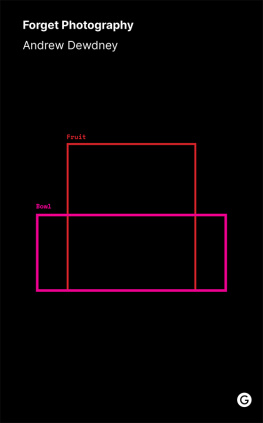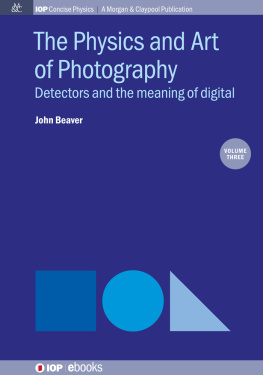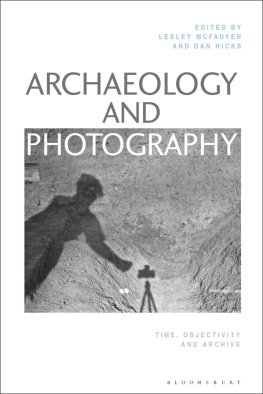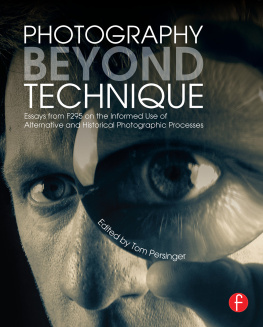Forget Photography
Forget Photography
Andrew Dewdney

Copyright 2021 Goldsmiths Press
First published in 2021 by Goldsmiths Press
Goldsmiths, University of London, New Cross
London SE14 6NW
Printed and bound by Versa Press
Distribution by the MIT Press
Cambridge, Massachusetts, and London, England
Copyright 2021 Andrew Dewdney
The right of Andrew Dewdney to be identified as the Author of this work has been asserted by him in accordance with sections 77 and 78 in the Copyright, Designs and Patents Act 1988. Every effort has been made to trace copyright holders and to obtain their permission for the use of copyright material. The publisher apologises for any errors or omissions and would be grateful if notified of any corrections that should be incorporated in future reprints or editions of this book.
All Rights Reserved. No part of this publication may be reproduced, distributed or transmitted in any form or by any means whatsoever without prior written permission of the publisher, except in the case of brief quotations in critical articles and review and certain non-commercial uses permitted by copyright law.
A CIP record for this book is available from the British Library
ISBN 978-1-912685-82-0 (hbk)
ISBN 978-1-912685-81-3 (ebk)
www.gold.ac.uk/goldsmiths-press

d_r0
For Oscar, Thea, Astrid and Nate
Contents
This book would not have been possible, nor conceived, without having a job at London South Bank University (LSBU) for the last twenty years, a highly supportive and convivial institution at the Elephant and Castle, retaining much of its former polytechnic character and ethos. For the first seven years I was employed in managing a growing portfolio of undergraduate digital media courses in what was a second wave of such expansion in higher education in the UK, which afforded me no time for sustained scholarship. During 2005, by extending my working day and through a creative collaboration with Peter Ride, we were able to produce The New Media Handbook for Routledge in 2006, which reignited my interest in academic study. There is a much longer history to my interest in what was once the medium of photography and how it could be mobilized, dating back to my time at the Cockpit Arts Workshop, The Watershed Media Centre in Bristol and at Newport School of Art and Design. Over my years at LSBU I have had the support and encouragement of many serious scholars in social science and media sociology, in particular Jeffrey Weeks and Janet Holland. In its most recent incarnation, the School of Arts and Creative Industries, under the stewardship of Janet Jones, has provided me with a safe haven in which to pursue more focused research. Phil Hammond has been a stalwart supporter of humanities research in an otherwise technocratic institution and I would like to thank him for his steady hand. More recently, Geoff Cox and Elena Marchevska, colleagues whose opinions I value and judgements I trust, have provided me with strong support. I would also like to acknowledge my colleagues Daniel Alexander, Adam Brown and Simon Terrill for serious and playful discussions held in offices, the pub and the Art Caf, speculating on the future and fate of photography education. In 2007, I was fortunate to be the recipient of a successful Arts and Humanities Research Council research award in collaboration with Tate Britain, entitled Tate Encounters: Britishness and Visual Culture, and thus began a long and fruitful intellectual friendship with Victoria Walsh, whose sharp and fearless mind has helped me ever since, including a critical reading of the original book proposal.
In 2012, I cofounded the Centre for the Study of the Network Image (CSNI) at LSBU with Katrina Sluis and Daniel Rubinstein, who shared an office next to mine in Borough Road. For a time we seemed to be in constant discussion and argument about photography education and the state of photography in general and that period remains seminal to this project. Annet Dekker arrived as the first postdoctoral administrator of CSNI and joined us as a co-director. Since then I have continued to work with Annet in joint supervision of our small group of research students and value her expertise, clear thinking and direct way of putting things. Annet also provided a critical commentary on the original book proposal, which helped my thinking. Working in the research environment of CSNI has also had a hand in shaping this book and I would like to acknowledge the contributions of all of my research students to my thinking, in particular Ioanna Zouli, Nicolas Malev, Gaia Tedone, Lozana Rossenova, Carolyn Defrin, Nicola Baird, Jeannette Ginslov, and more recently Victoria Ivanova, Qian Xiao, Rosie Hermon and Theresa Kneppers, all of whose research topics border upon my own.
Parts of the book have had lecture outings. In particular, on zombie photography, was refined over three lecture outings over a period of five years. I first presented the idea to a group of archivists and conservationists gathered at a Norwegian Arts Council Conference in Oslo in 2014, where the digitisation of photographic collections was under discussion and where I met Nina Lager Vestberg and Anna Dahlgren, who took a lively interest in my thinking. Subsequently I gave a shorter version of the zombie photography lecture at the 2015 Annual Conference of the UK Association of Photographers in Higher Education at Nottingham University. The last outing of zombie photography prior to writing the book was at a research seminar held by the Post-Photographic Research Project, directed by Wolfgang Brckle at the Hochschule Luzern Design & Kunst in 2019. During the latter stages of writing I was extremely lucky that the Post-Photography Research reading group of Katrina Sluis and Wolfgang Brckle, together with Doris Gassert and Marco de Mutiis, both from FotoMuseum Winterthur, read the first two chapters and gave me encouraging critical feedback at a Zoom meeting.
In 2019, Goldsmiths Press accepted my proposal and I am deeply grateful to Sarah Kember for the risk she took and to the editorial board for endorsing it. Since finishing a first draft, Susan Kelly has been most helpful and responsive as the commissioning editor and I am more than grateful to Dan Shutt for editing the manuscript and tolerating my innumeracy when it comes to dates. Goldsmiths would not have taken it on, I think, if it were not for the supportive critical reviews provided by Ben Burbridge and Katrina Sluis, whose help in seeing the books flaws has been invaluable. Their commentary has proved a trusted guide in clarifying the arguments over the course of revising the book during the Covid pandemic. I extend a particular debt of gratitude to Katrina Sluis, who has been so very generous in the level of detailed commentary on the entire manuscript and for providing constant encouragement. I would also like to acknowledge the long-term support of Chris Miller and Martin Lister, old friends on whom in the early wilderness days of writing I pressed first drafts and who responded generously in reading, commenting and generally believing in me and the project. I would also like to thank Robin Marriner for taking the time to read the first three chapters and whose email responses have led to further interesting discussions about theoretical writing and art school education. I would also like to thank Stephen Wilson, who I reached out to on Max Dewdneys instigation and who read on zombie photography, giving me yet another insightful and positive response.









